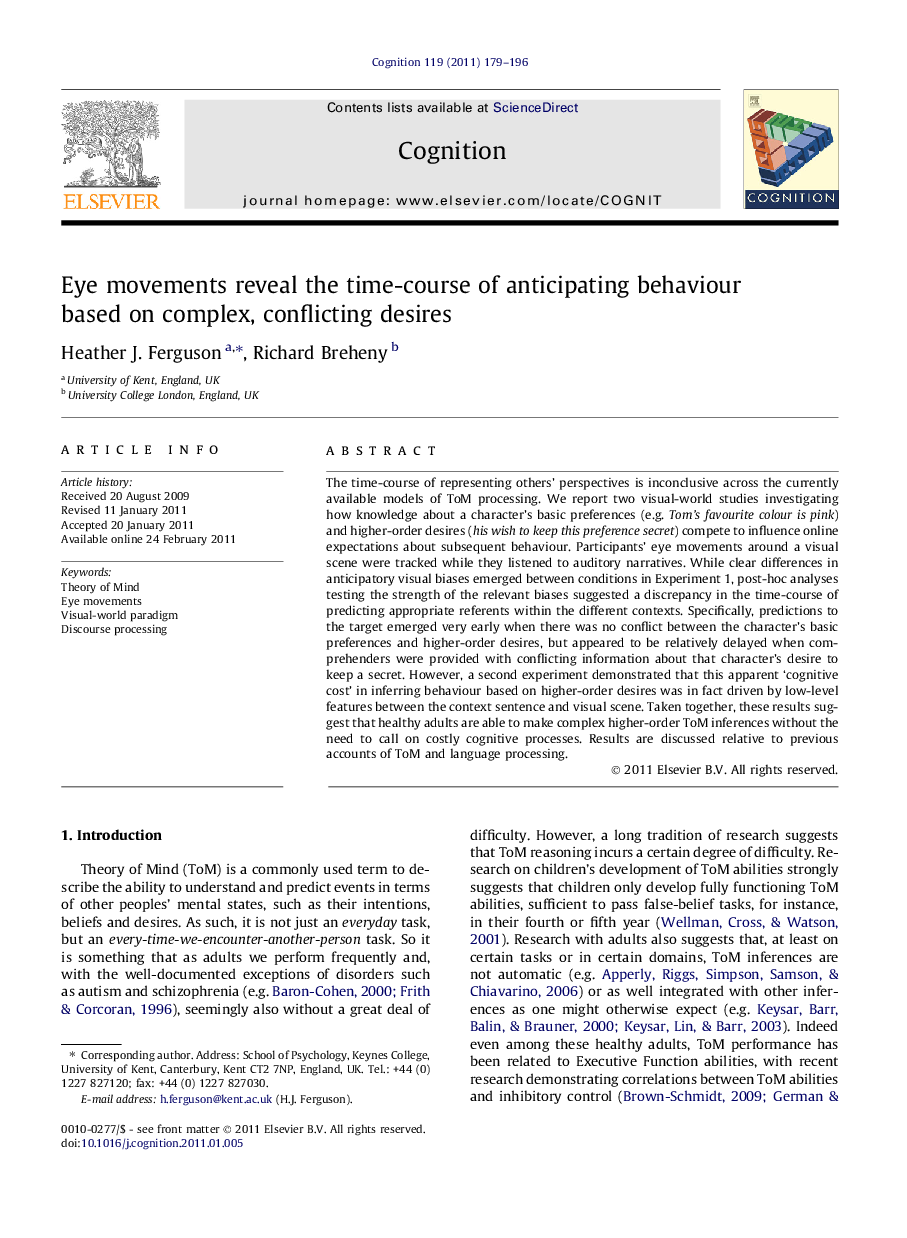| کد مقاله | کد نشریه | سال انتشار | مقاله انگلیسی | نسخه تمام متن |
|---|---|---|---|---|
| 926572 | 921881 | 2011 | 18 صفحه PDF | دانلود رایگان |

The time-course of representing others’ perspectives is inconclusive across the currently available models of ToM processing. We report two visual-world studies investigating how knowledge about a character’s basic preferences (e.g. Tom’s favourite colour is pink) and higher-order desires (his wish to keep this preference secret) compete to influence online expectations about subsequent behaviour. Participants’ eye movements around a visual scene were tracked while they listened to auditory narratives. While clear differences in anticipatory visual biases emerged between conditions in Experiment 1, post-hoc analyses testing the strength of the relevant biases suggested a discrepancy in the time-course of predicting appropriate referents within the different contexts. Specifically, predictions to the target emerged very early when there was no conflict between the character’s basic preferences and higher-order desires, but appeared to be relatively delayed when comprehenders were provided with conflicting information about that character’s desire to keep a secret. However, a second experiment demonstrated that this apparent ‘cognitive cost’ in inferring behaviour based on higher-order desires was in fact driven by low-level features between the context sentence and visual scene. Taken together, these results suggest that healthy adults are able to make complex higher-order ToM inferences without the need to call on costly cognitive processes. Results are discussed relative to previous accounts of ToM and language processing.
Journal: Cognition - Volume 119, Issue 2, May 2011, Pages 179–196